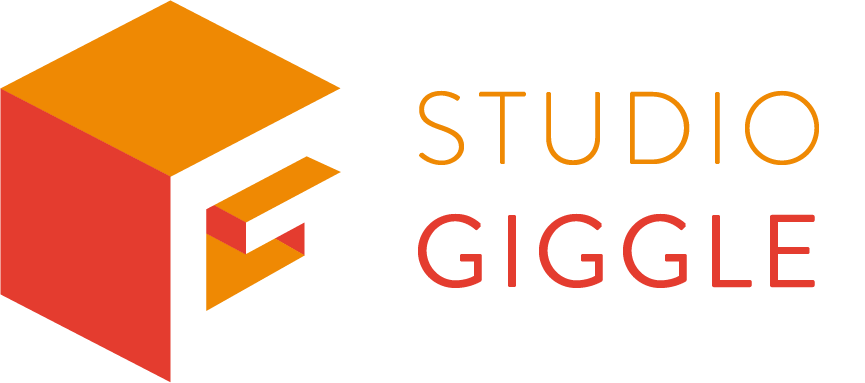Ah, talking heads. Good old fashioned storytelling.
It can be pretty daunting; the thought of a crew turning up. Lumbering up the stairs with kit; drinking all your coffee, sticking a big camera in your face… but at Studio Giggle we like to think we go the extra mile in making people feel at ease. Despite the fact we became filmmakers so we’d never have to do it ourselves…
Why me?!
We like to hear a range of voices. An overview of a company can only really be achieved by speaking to as many people as possible. Just because someone is nervous, they shouldn’t be discounted from the filming day. In fact, in our experience, sometimes it’s the quieter people that come out with the well-formed answers because they take time to think.
Will it be scary?
We like to treat the interview as a conversation – rather than an interrogation. We will usually sit our chairs opposite one another and chat. A good interviewer will make the subject feel totally at ease. Whilst daunting at first, a lot of people say that they forget the cameras are there after a while and the conversation starts to flow. There will be key points to hit and questions to answer, but like any good conversation, if it goes off on a tangent, that’s where we may capture the real gold. Specific and unusual responses are more likely to make the edit because they offer variety.
Why are there 2 cameras filming?
We sometimes use 2 cameras so we have more shots to play with in the edit. This is crucial if we aren’t getting any b-roll, as it means we can cut around the interview whilst it still looks like one long take. The 2 angles are also handy if someone starts a response well and ends on a nice point, but goes off on a tangent in between. We can remove the bit we don’t need.
Where shall we do it?
The location is really important. As a general rule – the bigger the space you can provide us to film in, the better. This is because the further away the subject is from the back wall, the greater the depth of field can be achieved. This gives the interview that professional, soft focus background that really makes the subject ‘pop’. Natural light is often ‘nice to have’ and we bring our own lights, to mimic studio conditions where we can. The location should be as quiet as possible. Sounds that are normally unnoticeable suddenly become an issue when we start rolling and Karen’s high heels become the loudest thing in the world, drowning out your interview. The exception to this rule is when we can see the cause of the noise on the film i.e if it’s obvious we are in a factory, or on a busy street, then the audience will appreciate that there is going to be background noise, and it adds to the atmosphere. In larger meeting rooms during the summer, it’s worth finding out whether the air conditioning can be turned off, as this will be picked up by the mic too.
What shall I put in the background?
Don’t be overly concerned with overloading marketing elements into the background. Just seeing your office in soft focus is subtle enough to show where we are. Sometimes packing in roll banners and logos cheapens the appearance of a talking head, when branding can be added in post as on-screen graphics.
How long will this take?
Give the crew time to setup. The longer the set up time, particularly at the start of the day, the better. I would always tell the crew to arrive an hour before the first contributor is due to sit down. This sounds like a lot, but allows for the inevitable faffing-around-time that is finding the right room, working out lighting, getting the perfect angle… and then being told you need to swap rooms and do it all again. As the day goes on, because the kit is already unpacked, the prep time for each interview is less, but you should always allow at least 10 mins, so that the camera operator can change the position of the setup, giving a variety to the angles in the edit.
For the interview itself, allow enough time not to be rushed. 20 mins is usually a good amount of time, and depending on the number of questions, will allow you to go over a couple again at the end. And yes, 20 minutes flies by once you get going.
What do I wear?
If we are making a film about your company, you should wear something that you would normally wear to work. It can’t hurt to look smart, but avoid doing it in a way that stands out. If your boss is in shorts and t-shirt and you turn up in a 3 piece suit, you are going to be very memorable in the edit. We will let you know if you need to wear anything special; for instance, if we are shooting against a green screen.
What shall I say?
We want authentic responses, so just answer the question. You don’t need to rush into an answer – think and then reply. An important part for the edit is including the question in the answer. The interviewer’s questions are going to be sliced out in the final film, so it’s important to give context to what you are saying. Try and be concise, and the interviewer will ask you to expand on your answers if they want to find out more. The most important thing to remember is it’s not live TV. You can mess up, you can stop for a drink, you can ask for the question again, you can start again, you can go back, take a short break; we’ll cut all this out in the edit, so relax.
How will I remember what to say?
Never, under any circumstances, try and memorise what you are going to say. This will always sound weird and unnatural. It’s ok to do some prep but if you want to read from a script you are going to need an autocue. Just let the interviewer guide you. You know the answers. We’re not going trying to catch you out. Most of the time we are asking people about their jobs, or a topic closely linked to their role, so in the majority of shoots no prep is needed at all. Remember as the filmmakers it is our job to have researched the area and figured out the key points we want to raise in the interview, and it’s our responsibility to make sure these points are raised; which is why we have a list of questions. The interviewer may take notes while you are talking but this just for their benefit. If you don’t know the answer to something, we can prompt you, or you can just say you don’t know, and we’ll move swiftly on!
Where shall I look?
Don’t look at the camera. Like a moth to a flame, it’s funny how sometimes we are drawn to the lens. Don’t be tempted as this will look very odd. It takes a lot of training to be able to deliver a piece to camera down the lens. Instead, gaze into the eyes of your interviewer, who will be sat slightly angled just off-camera. The connection with the interviewer is the engaging part.

Phew…
Afterwards, don’t overthink what you’ve said. Our aim as communications specialists is to make all of our contributors look like experts, not fools. We will choose the most interesting, succinct, and intelligent answers in the edit. After all that, we’ll only use 1% of what you’ve said anyway!


